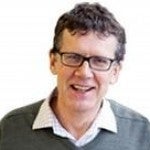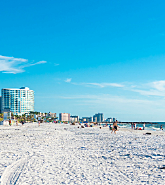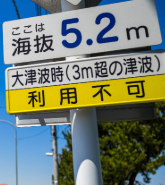The height reached by the tsunami from the 2011 Great East Japan earthquake is marked on the wall of the arrivals hall at Sendai airport. This is a city on the disaster’s front line. At the four year anniversary of the catastrophe, Sendai was a natural location for the March 13-18, 2015 UN World Conference on Disaster Risk Reduction, to launch a new framework document committing countries to a fifteen year program of actions. Six people attended the conference from RMS: Julia Hall, Alastair Norris, Nikki Chambers, Yasunori Araga, Osamu Takahashi, and myself, to help connect the worlds of disaster risk reduction (DRR) with catastrophe modeling.
The World Conference had more than 6,000 delegates and a wide span of sessions, from those for government ministers only, through to side events arranged in the University campus facilities up the hill. Alongside the VVIP limos, there were several hundred practitioners in all facets of disaster risk, including representatives from the world of insurance and a wide range of private companies. Meanwhile, the protracted process of negotiating a final text for the framework went on day and night through the life of the meeting (in a conference room where one could witness the pain) and only reached final agreement on the last evening. The Sendai declaration runs to 25 pages, contains around 200 dense paragraphs, and arguably might have benefited from some more daylight in its production.
RMS was at the conference to promote a couple of themes—first, that catastrophe modeling should become standard for identifying where to focus investments and how to measure resilience, moving beyond the reactive “build back better” campaigns that can only function after a disaster has struck. Why not identify the hot spots of risk before the catastrophe? Second, one can only drive progress in DRR by measuring outcomes. Just like more than twenty years ago when the insurance industry embraced catastrophe modeling, the disasters community will also need to measure outcomes using probabilistic models.
In pursuit of our mission, we delivered a 15-minute “Ignite” presentation on “The Challenges of Measuring Disaster Risk” at the heart of the main meeting centre, while I chaired a main event panel discussion on “Disaster Risk in the Financial Sector.” Julia was on the panel at a side event organized by the Overseas Development Institution on “Measuring Resilience” and Robert was on the panel for a UNISDR session to launch their global work in risk modeling, and on a session organized by Tokio Marine with the Geneva Association on “How can the insurance industry’s wealth of knowledge better serve societal resilience?”—at which we came up with the new profession of “resilience broker.”
The team was very active, making pointed interventions in a number of the main sessions, highlighting the role of catastrophe models and the challenges of measuring risk, while Alastair and Nikki were interviewed by the local press. We had prepared a leaflet that articulated the role of modeling in setting and measuring targets around disaster risk reduction that was widely distributed.
We caught up with many of our partners in the broader disasters arena, including the Private Sector Partners of the UNISDR, the Rockefeller 100 Resilient Cities initiative, the UNEP Principles for Sustainable Insurance, and Build Change. The same models required to measure the 100-year risk to a city or multinational company will, in future, be used to identify the most cost effective actions to reduce disaster risk. The two worlds of disasters and insurance will become linked through modeling.






